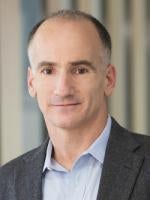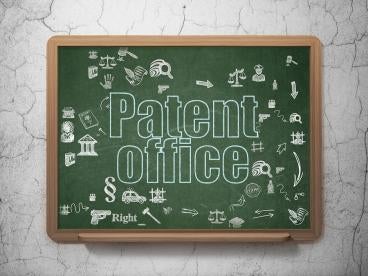The U.S. Patent & Trademark Office (USPTO) has primarily focused on correctness when issuing patents. However, the USPTO recently announced a priority for issuing clear patents as well. The hope is that by providing a clearer file history, the USPTO’s examination and resulting reasons for allowance will better serve to inform the public about an issued patent. According to the USPTO,
patents that are both correct and clear [help] potential users of patented technologies to make informed decisions regarding how to avoid infringement, whether to seek a license, and/or when to settle or litigate a patent dispute. Patent owners also benefit from having clear notice on the boundaries of their patent rights.
As part of its initiative, the USPTO is launching a “new wave of Clarity of the Record Training . . . emphasizing the benefits and importance of making the record clear and how to achieve greater clarity.” USPTO examiners will receive training on best practices for applying 35 U.S.C. Section 112 rejections during examination. Section 112 recites in its paragraphs (a) through (f) five separate requirements for patentability. Paragraphs (a), (b) and (f) are mentioned in the PTO’s recent announcement.
Paragraph (b)
Paragraph (b) of section 112 (also known as the definiteness requirement) is most commonly cited during examination when rejecting a claim for lack of clarity. It requires that patent claims “particularly point out and distinctly claim subject matter regarded as the invention.” No doubt the USPTO’s examiner training will continue to emphasize how and when to make rejections under this section when claims appear indefinite, especially in light of the heightened standard for compliance with paragraph (b) established this year in Nautilus v. Biosig. Instruments Inc.
Paragraph (f)
According to the USPTO, examiners recently received training on functional claiming and how to apply paragraph (f) during examination. Functional claiming is commonly cited as a reason why a patent’s claim is unclear. Paragraph (f) is intended to apply when claims are functional, meaning an invention is claimed by what it does, not what it is. When paragraph (f) is applied, the meaning of the functional language can be greatly clarified because the claim is then essentially limited to the structure disclosed in the specification that can perform the function. Thus, the outer boundary of the claim is more easily found.
Until recently, paragraph (f) was usually only applied if the magic word(s) “means” or “means for …” were used in a claim. However, the en banc Federal Circuit this year in Williamson v. Citrix changed this practice, holding that the more important question to ask, when deciding whether paragraph (f) applies, is whether there is sufficient structure claimed to perform the function. With this change examiners should be far more willing to ensnare functional-looking claims within the ambit of paragraph (f) when clarity is needed. Applicants should make sure to have the corresponding structure disclosed in the application or their claim might be invalid.
Paragraph (a)
Unlike paragraphs (f) and (b), there have not been any recent changes in law with respect to paragraph (a) of Section 112. Nonetheless, the USPTO’s upcoming examiner training is said to also include “an assessment of a fully described invention under 35 U.S.C. 112(a).” Paragraph (a) requires that a patent claim is accompanied by a description that enables one to make and use a claimed invention. This requirement, also referred to as “enablement,” is rarely invoked for applications in the predictable arts, usually because there is at least one embodiment enabled and alternatives to that embodiment (encompassed within the scope of the claim) can be reverse engineered without much effort. However, a claim – even for a simple mechanical device – could arguably be rejected as non-enabling if the scope of words in the claim is so broad as to encompass embodiments that could not possibly be made to work in the manner expected. In other words, the patent claim is not clear.
For example, a claim to a bicycle comprising a frame and wheels connected to the frame could be rejected as non-enabled under paragraph (a) if the accompanying description for the different embodiments of wheels and frame are prolix: an exhaustive listing of a wide variety of sizes and shapes with little regard to whether a particular embodiment of the frame could be used with each, or even some portion of the wheel embodiments. A response to this lack of enablement rejection would require the applicant to choose a subset of the wheel and frame types that could be made to work without undue experimentation. As a result, the meaning of “wheel” and “frame” is clearer.
Paragraph (a) also requires a written description that conveys a sense that the inventor was in possession of the claimed invention at the time the patent application was filed. This requirement, also known as the “written description” requirement, could alternatively be used to reject the bicycle claim on similar grounds. If the description and drawings refer essentially to only a single embodiment of a bicycle, the claim could be found unpatentable as not satisfying the written description requirement because the inventor was not in possession of every wheel and frame combination disclosed in the specification, notwithstanding the (all-too familiar) accompanying boilerplate language concerning alternative embodiments. Hence, alternatively relying on the written description requirement of paragraph (a), the USPTO can enforce a clearer meaning for “wheel” and “frame” via an examiner rejection.
In sum, patent applicants should expect more Section 112 rejections as the USPTO “redoubles” efforts to make patents more clear. Buttressed by recent changes in law geared towards making patents clearer, increases in the paragraph (b) rejections and claim constructions under paragraph (f) (functional claiming) by USPTO examiners should already be expected by patent practitioners. Practitioners should also not be surprised to receive rejections in other, less cited parts of Section 112 as well, even for inventions in predictable arts such as industrial, electrical and telecommunications.




 i
i

